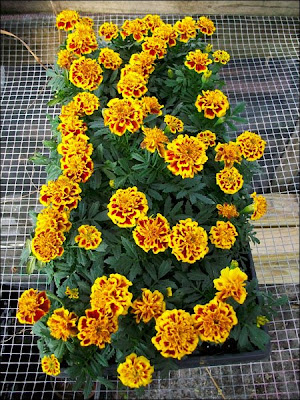Today was a busy day. We started early in the morning down at MetroZoo, where we picked up a load of elephant compost, to mix in with our soil for growing plants. (Thanks so much to John, who loaded us up, and Tom and Tarah, who helped arrange the endeavor. Thanks also to Elizabeth and Jose Bermudez, for borrowing and driving their friend's truck, as well as helping out tremendously in so many ways.)
Once we unloaded at TROY, the kids began to arrive and we started our day's lesson on how to build a garden bed.
1. Select a sunny area in the yard with access to irrigation.
2. Dig up the grass and till up the soil, removing any rocks or roots.
3. Construct a raised border around the bed.
4. Mix in compost and water thouroughly.
5. Plant seedlings.
6. Water.
Next week we will learn how to start pineapple plants from pineapple tops donated by Whole Foods Market.
Tuesday, February 17, 2009
Scooping up Elephant Dung at MetroZoo.
Working.
Populating the Garden Bed.
New Garden Bed and West Lawn View.
Monday, February 16, 2009
About the Project.
Gardens of TROY is a pilot horticulture program run by volunteers in conjunction with Empowered Youth, a non-profit group dedicated to improving the lives of at-risk youth.
TROY Academy, where the program takes place, is a small alternative high school located on the grounds of the 27th ave. Juvenile Detention Center in Miami, Florida. Students at TROY are not prisoners, but many are sentenced to attend the school as part of post arrest intervention programs, or after expulsion from traditional schools.
As of February 2009 the horticulture class meets every Saturday morning from 9-12. Students learn gardening and landscaping basics, including seed germination, plant propagation and garden design, with an emphasis on edible varieties. After completion of the program, students will have developed a level of aptitude sufficient to secure employment in the fields of landscaping, horticulture and agriculture.
This blog is intended to act as a snapshot into the program, offering donors, volunteers and faculty of similar projects a regular report on the progress of our efforts.
Thank you so much for your interest. For any inquiries, including how to make donations, please email gardensoftroy@gmail.com.
Sincerely,
Benjamin Thacker,
Garden Project Administrator
TROY Academy
TROY Academy, where the program takes place, is a small alternative high school located on the grounds of the 27th ave. Juvenile Detention Center in Miami, Florida. Students at TROY are not prisoners, but many are sentenced to attend the school as part of post arrest intervention programs, or after expulsion from traditional schools.
As of February 2009 the horticulture class meets every Saturday morning from 9-12. Students learn gardening and landscaping basics, including seed germination, plant propagation and garden design, with an emphasis on edible varieties. After completion of the program, students will have developed a level of aptitude sufficient to secure employment in the fields of landscaping, horticulture and agriculture.
This blog is intended to act as a snapshot into the program, offering donors, volunteers and faculty of similar projects a regular report on the progress of our efforts.
Thank you so much for your interest. For any inquiries, including how to make donations, please email gardensoftroy@gmail.com.
Sincerely,
Benjamin Thacker,
Garden Project Administrator
TROY Academy
Subscribe to:
Comments (Atom)


















